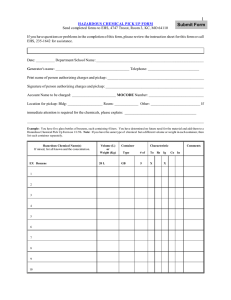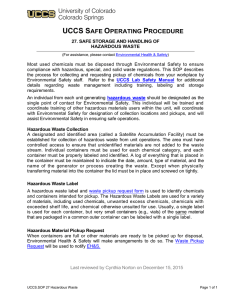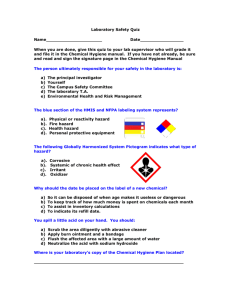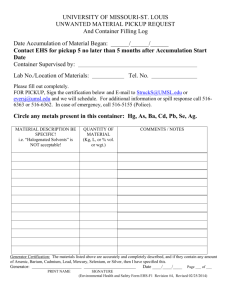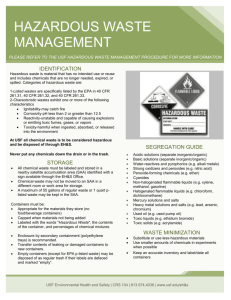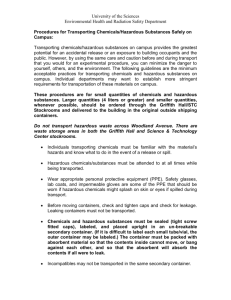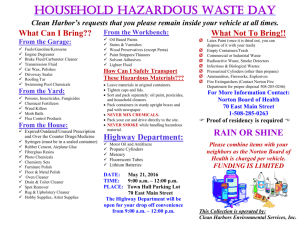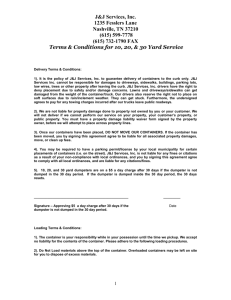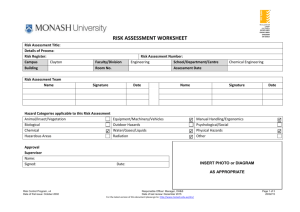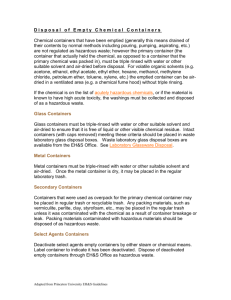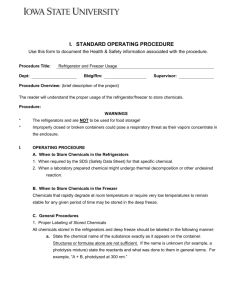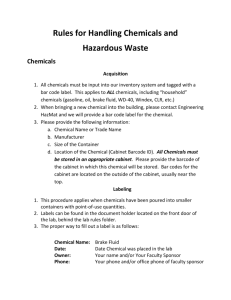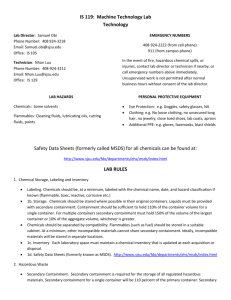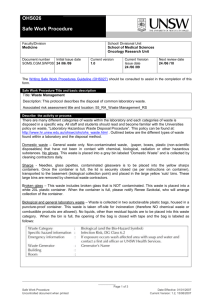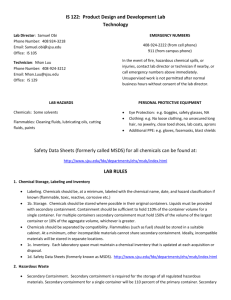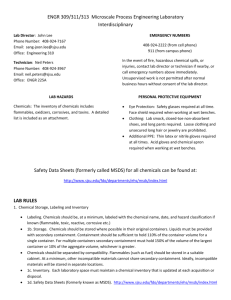Hazardous Waste Pickup Instructions
advertisement
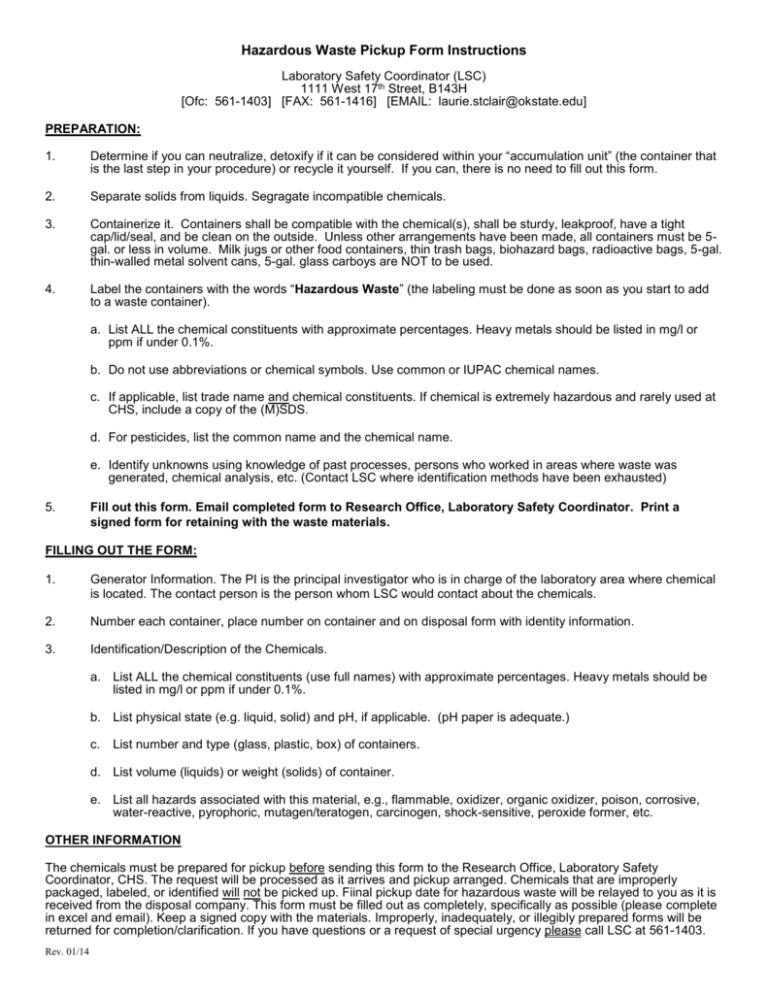
Hazardous Waste Pickup Form Instructions Laboratory Safety Coordinator (LSC) 1111 West 17th Street, B143H [Ofc: 561-1403] [FAX: 561-1416] [EMAIL: laurie.stclair@okstate.edu] PREPARATION: 1. Determine if you can neutralize, detoxify if it can be considered within your “accumulation unit” (the container that is the last step in your procedure) or recycle it yourself. If you can, there is no need to fill out this form. 2. Separate solids from liquids. Segragate incompatible chemicals. 3. Containerize it. Containers shall be compatible with the chemical(s), shall be sturdy, leakproof, have a tight cap/lid/seal, and be clean on the outside. Unless other arrangements have been made, all containers must be 5gal. or less in volume. Milk jugs or other food containers, thin trash bags, biohazard bags, radioactive bags, 5-gal. thin-walled metal solvent cans, 5-gal. glass carboys are NOT to be used. 4. Label the containers with the words “Hazardous Waste” (the labeling must be done as soon as you start to add to a waste container). a. List ALL the chemical constituents with approximate percentages. Heavy metals should be listed in mg/l or ppm if under 0.1%. b. Do not use abbreviations or chemical symbols. Use common or IUPAC chemical names. c. If applicable, list trade name and chemical constituents. If chemical is extremely hazardous and rarely used at CHS, include a copy of the (M)SDS. d. For pesticides, list the common name and the chemical name. e. Identify unknowns using knowledge of past processes, persons who worked in areas where waste was generated, chemical analysis, etc. (Contact LSC where identification methods have been exhausted) 5. Fill out this form. Email completed form to Research Office, Laboratory Safety Coordinator. Print a signed form for retaining with the waste materials. FILLING OUT THE FORM: 1. Generator Information. The PI is the principal investigator who is in charge of the laboratory area where chemical is located. The contact person is the person whom LSC would contact about the chemicals. 2. Number each container, place number on container and on disposal form with identity information. 3. Identification/Description of the Chemicals. a. List ALL the chemical constituents (use full names) with approximate percentages. Heavy metals should be listed in mg/l or ppm if under 0.1%. b. List physical state (e.g. liquid, solid) and pH, if applicable. (pH paper is adequate.) c. List number and type (glass, plastic, box) of containers. d. List volume (liquids) or weight (solids) of container. e. List all hazards associated with this material, e.g., flammable, oxidizer, organic oxidizer, poison, corrosive, water-reactive, pyrophoric, mutagen/teratogen, carcinogen, shock-sensitive, peroxide former, etc. OTHER INFORMATION The chemicals must be prepared for pickup before sending this form to the Research Office, Laboratory Safety Coordinator, CHS. The request will be processed as it arrives and pickup arranged. Chemicals that are improperly packaged, labeled, or identified will not be picked up. Fiinal pickup date for hazardous waste will be relayed to you as it is received from the disposal company. This form must be filled out as completely, specifically as possible (please complete in excel and email). Keep a signed copy with the materials. Improperly, inadequately, or illegibly prepared forms will be returned for completion/clarification. If you have questions or a request of special urgency please call LSC at 561-1403. Rev. 01/14 DEPARTMENT ABBREVIATIONS: Department ANATOMY/CELL BIOLOGY BIOCHEMISTRY/MICROBIOLOGY CTR FOR AEROSPACE & HYPERBARIC MED FORENSIC SCIENCES PATHOLOGY PHARMACOLOGY/PHYSIOLOGY RESEARCH Acronym AC BM CAHM FS PA PPH RS (notify Laboratory Safety Coordinator if there are additional departments) Rev. 01/14
